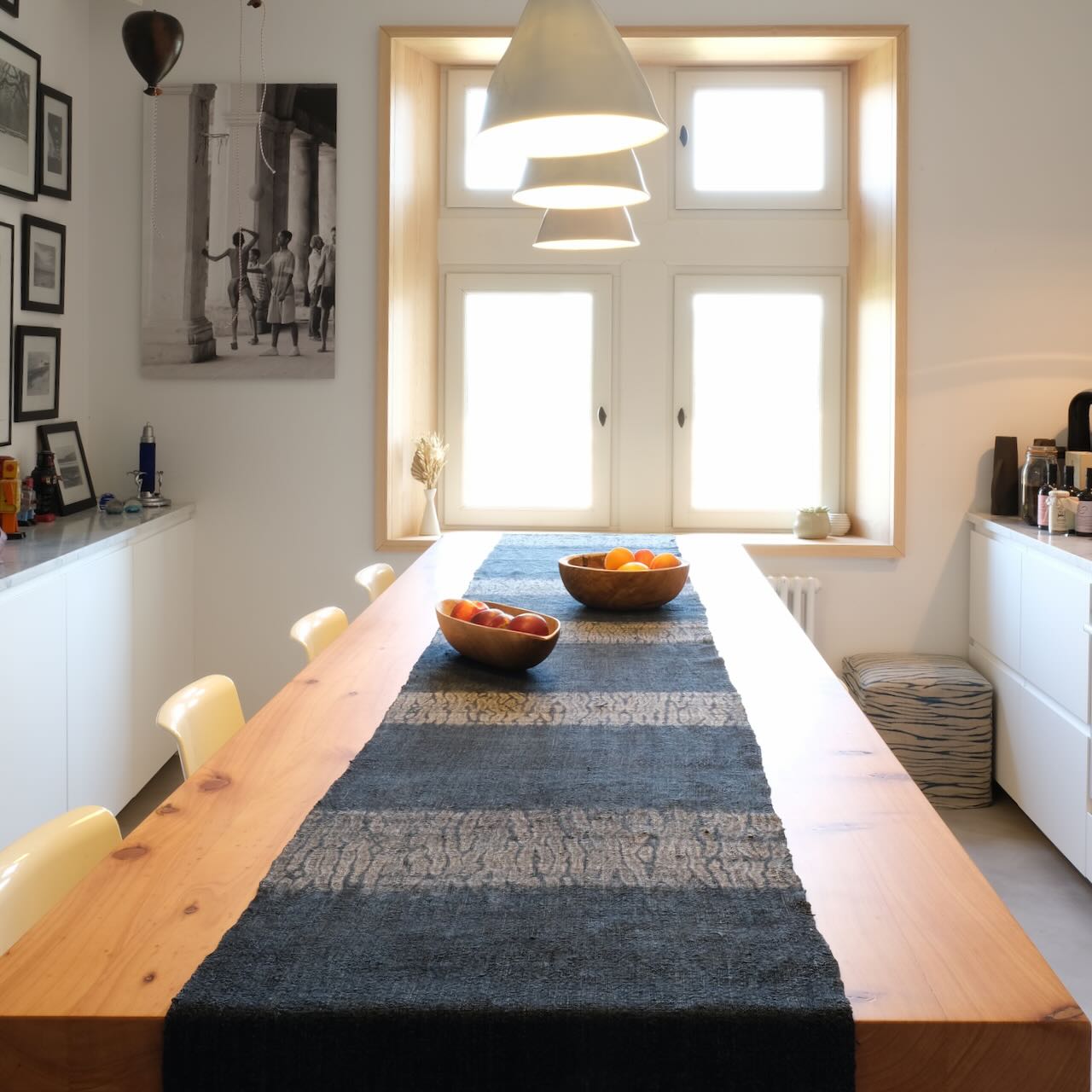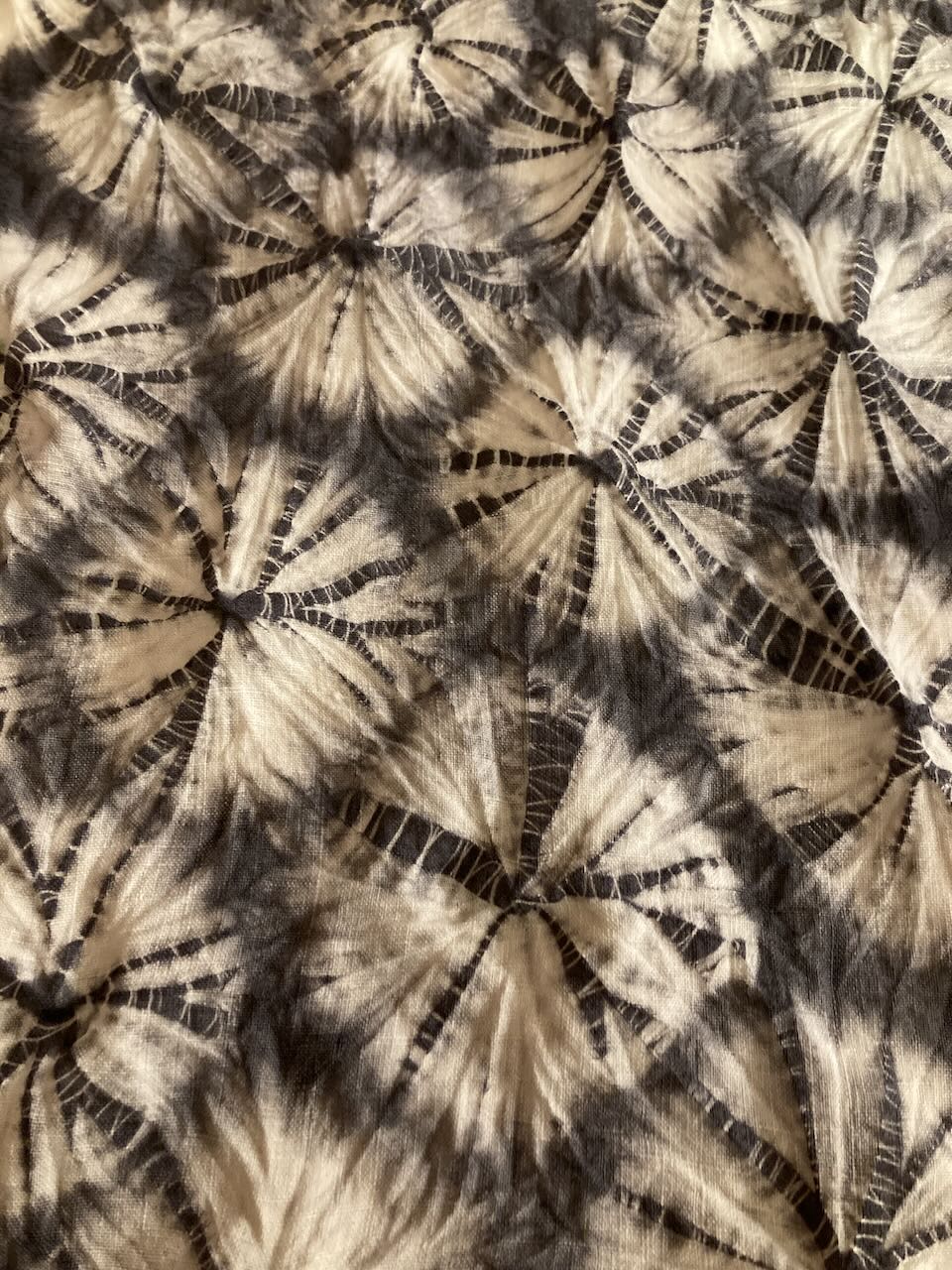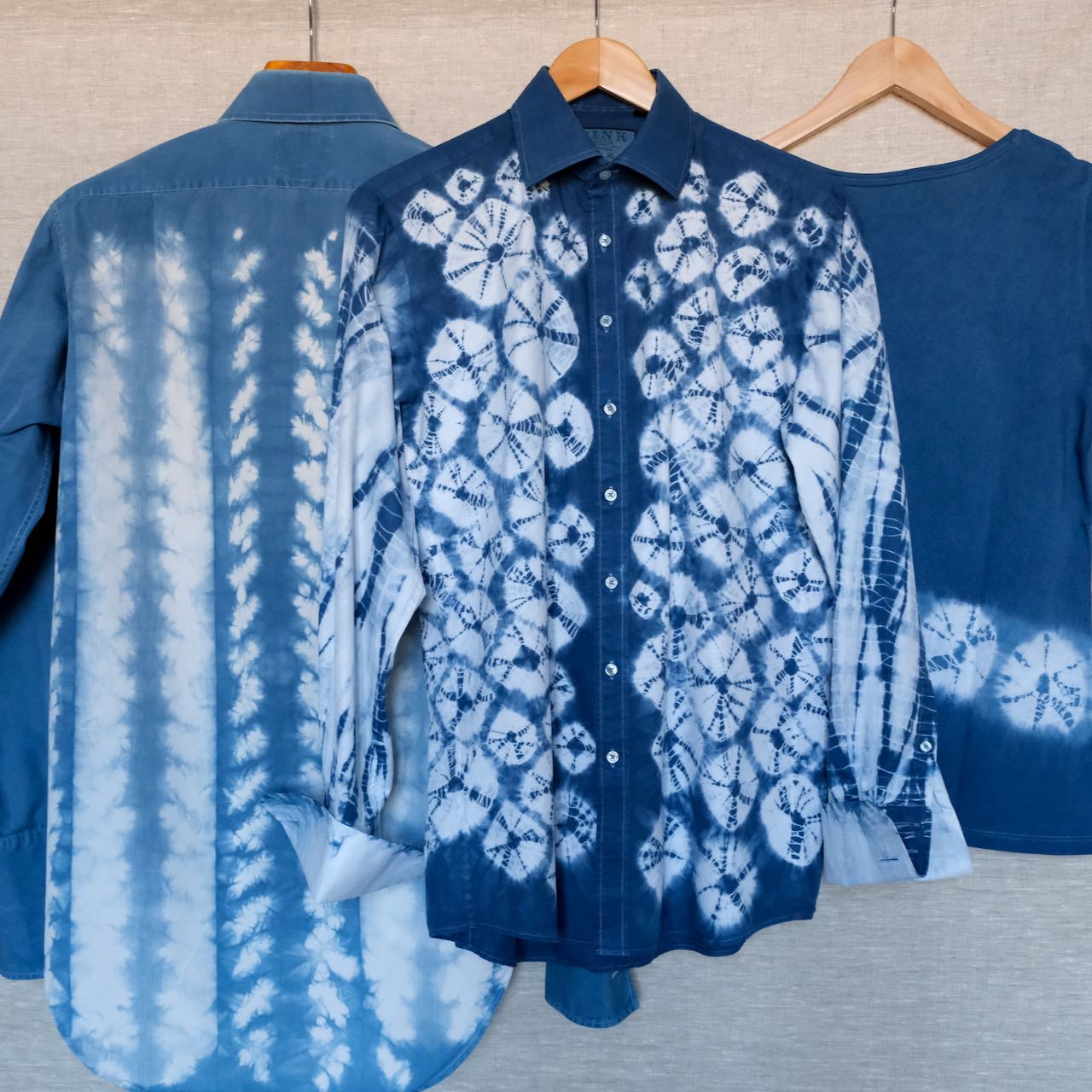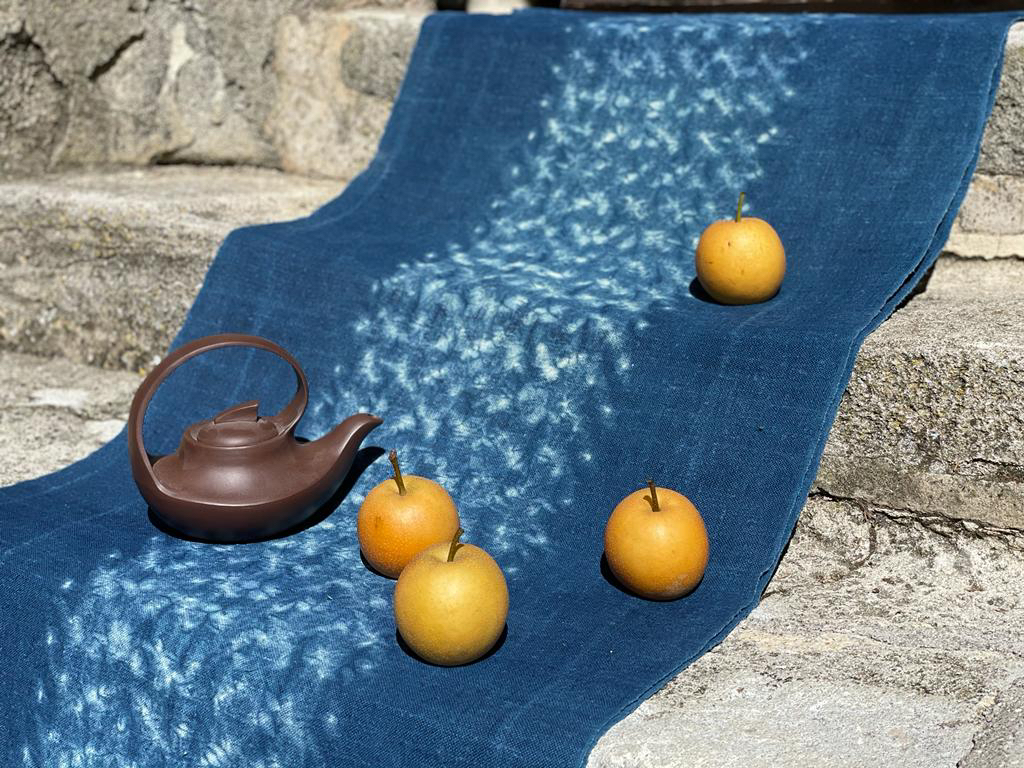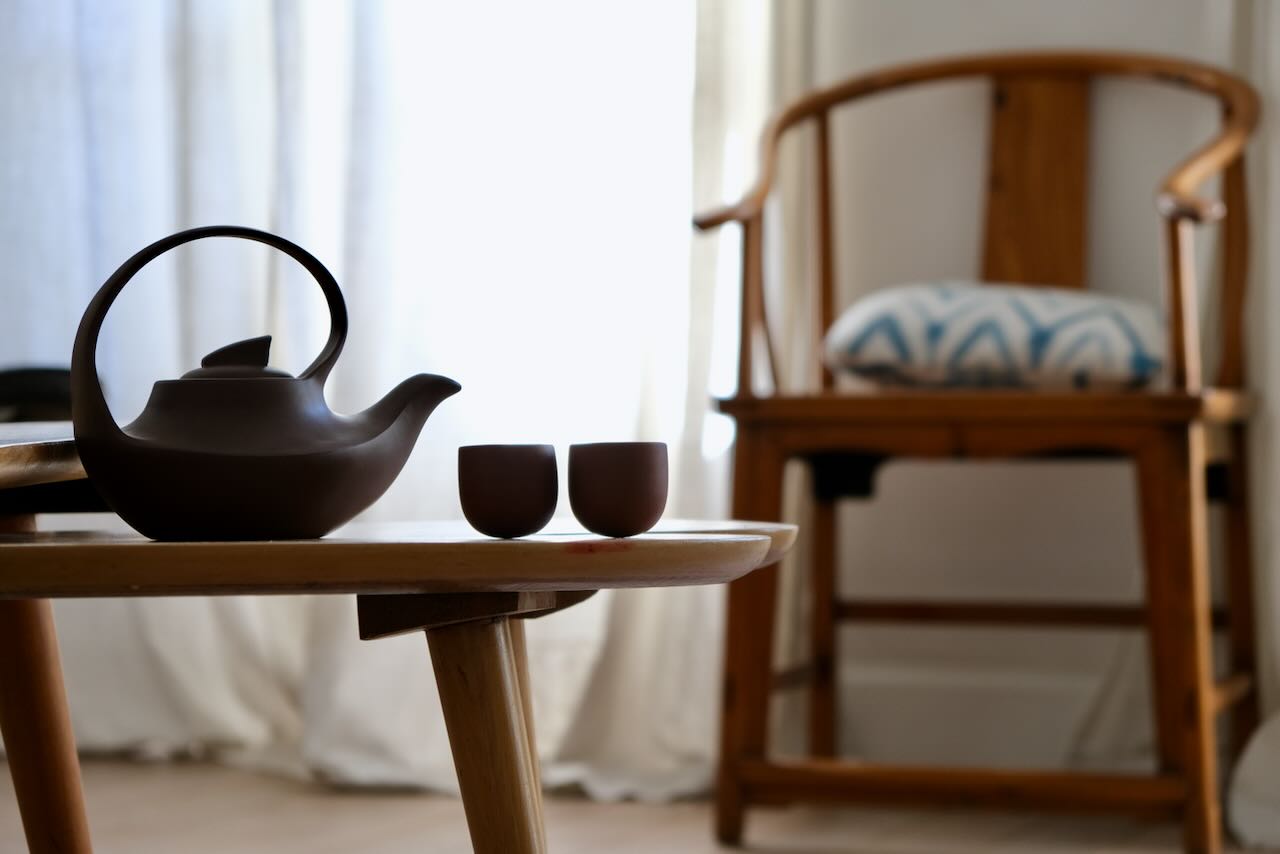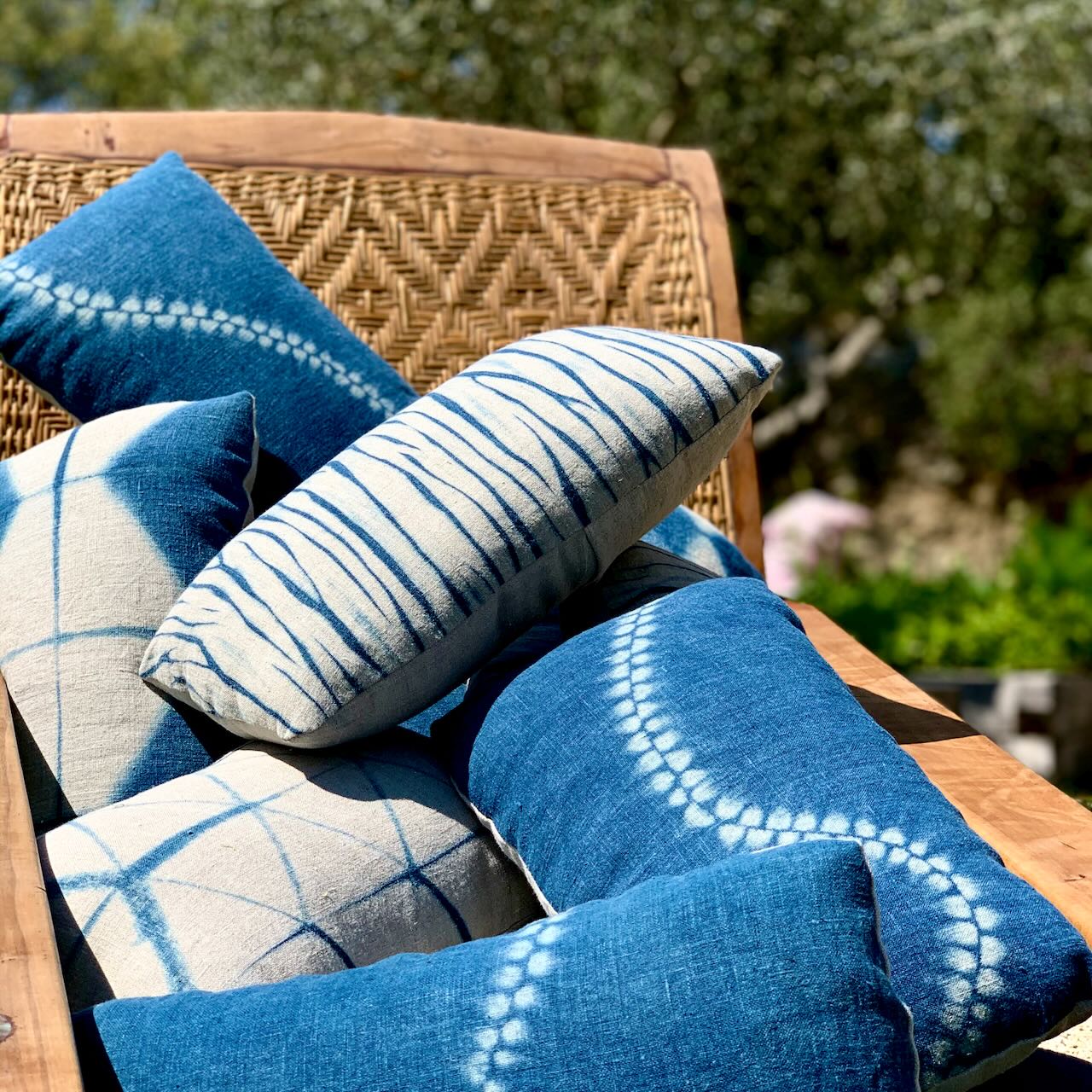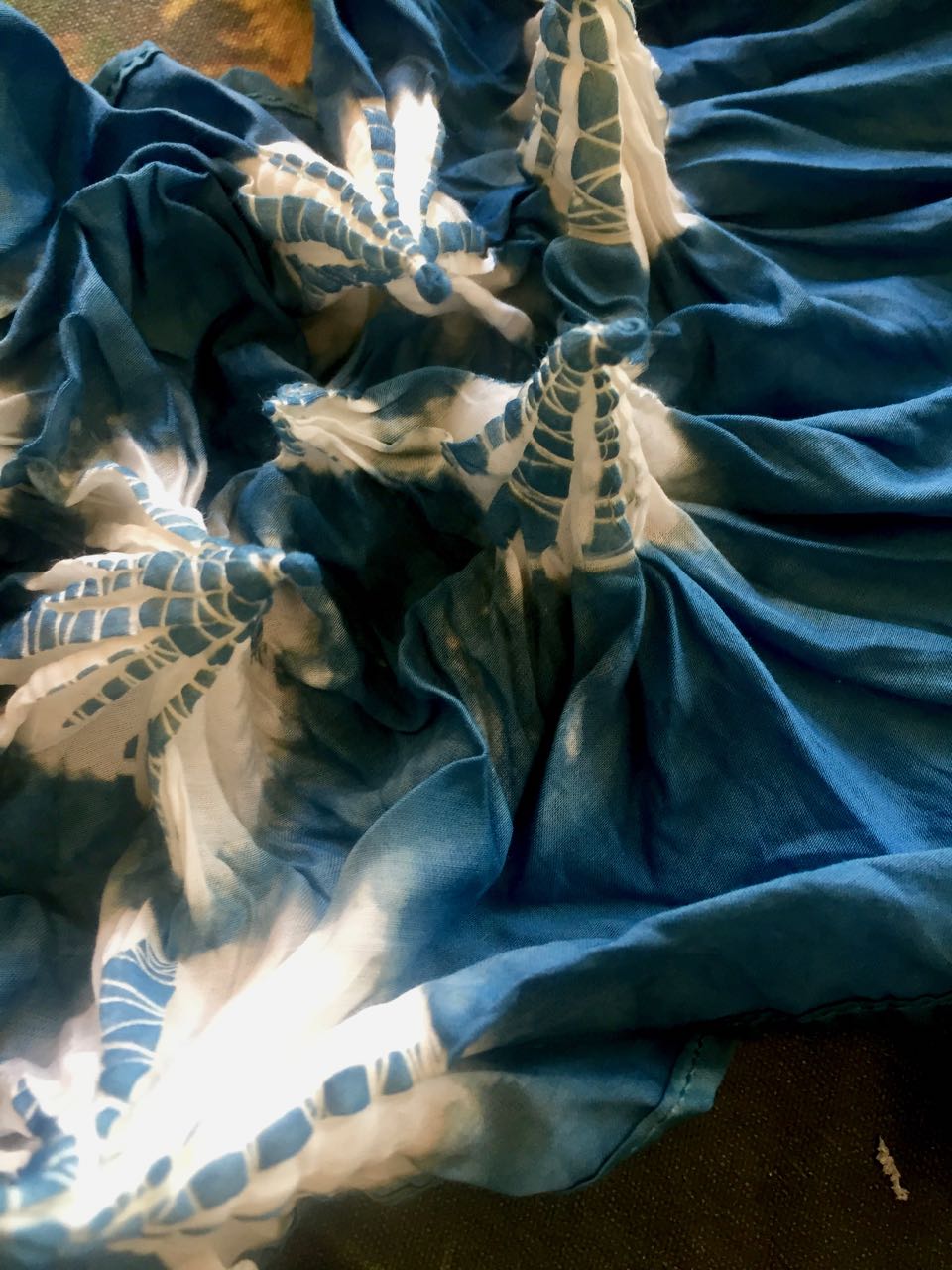I love this pattern, it's irregular regularity and strong contrast. Every line is made by squeezing the fabric in small folds. Those folds are created by small stitches running perpendicular to the lines. A very long process, but once the rhythm is found, I love the...
hand dyed
Tegumo shibori
Tegumo shibori is a type of tied resist developed in Arimatsu, Japan, where I had the chance of training with master Kuno-san from Kuno Studio (see blogpost in process here) During the Edo period, the busy Tokaido route saw the flourishing of trade. Arimatsu's...
Upcycling
It all started as a whim, a wish to cover up a stain on an old favourite linen skirt... and it ended up being a great idea! Soon, one of my clients was asking me to upcycle her lovely white linen dress. Upcycling beloved items of clothing to cover up stains, or...
More shiboris
A fun shooting on the stone stairs of our place in Vaison-la-Romaine, in the heart of the medieval town, where I open the showroom upon appointment. All photos are linked to their respective product or category By the pool at La Baye des Anges where I dye the linen...
Bye Marseille
After over a decade of living in Marseille, we left a piece of our hearts there when moving out. All photos are linked to their respective product or category
Back from Tokushima
In Septembre 2019, along with a group of fellow natural dyers conducted by Leaf organisation (now Tinctoria), we had the incredible chance to attend a 10 day class at Buaisou where along with putting together a Sukumo based indigo vat, we also practised several...
Block printing
Block printing is a technique used to create patterns by stamping shapes cut out of wooden blocks. The blocks are previously impregnated either with concentrated mordant, or with mild acid that erases the mordant pre-existing on the fabric. This creates either a...
Arimatsu Shibori, from tradition to innovation
Was very lucky to attend a workshop with Kuno Hiroaki organised by Couleur Garance. His enthusiasm about traditional indigo shibori and the way he envisions it's transposition into a XXIe century sustainable and modern production is very inspiring. We trained in...

